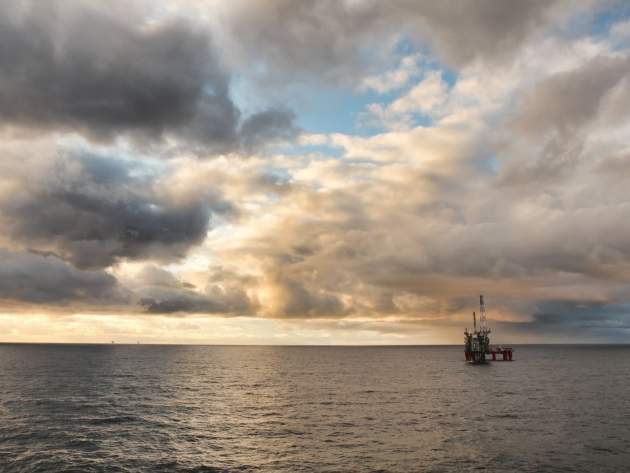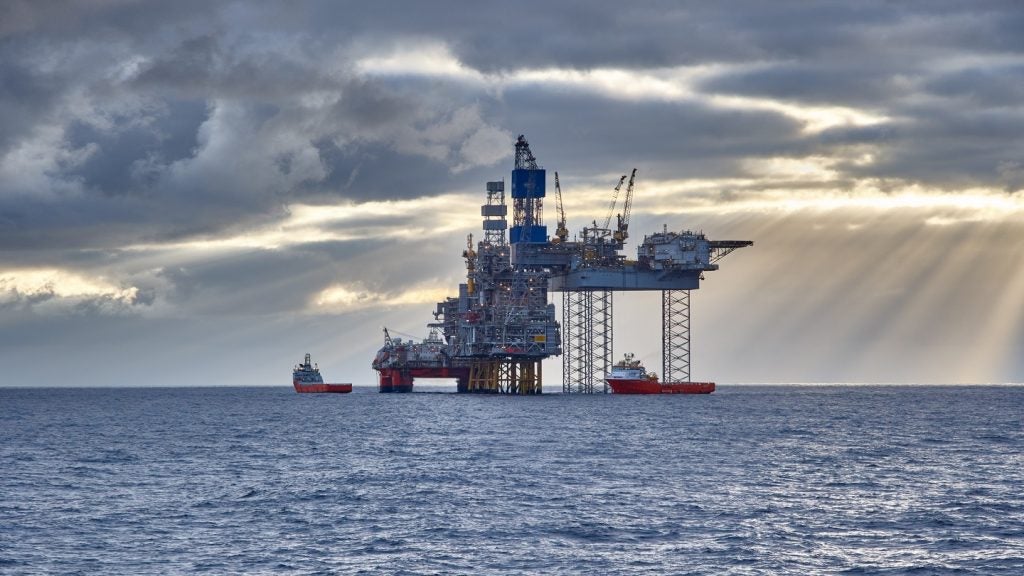

Earlier this year, UK-based oil firm Chrysaor became an overnight sensation in the North Sea oil and gas sector. At the end of January, the company agreed on a $3bn acquisition of North Sea assets from Royal Dutch Shell.
When the deal completes, which is expected in the second half of this year, Chrysaor – previously best known for its stake in the Solan Basin west of Shetland – will find itself propelled to the position of the largest independent oil and gas operator in the North Sea. The acquired assets consist of Shell’s interest in fields Beryl, Bressay, Buzzard, Elgin-Franklin, Erskine, Everest, the Greater Armada cluster, J Block and Lomond, as well as a 10% stake in the Schiehallion field west of Shetland. Chrysaor will become the operator at the Armada, Everest and Lomond fields, while the other interests have been acquired as non-operated investments.
All told, the assets produced 115,000 barrels of oil equivalent per day in 2016 with the redeveloped Schiehallion expected to add more production when it comes back on-stream later in 2017. In one swipe, Chrysaor has taken ownership of more than 50% of Shell’s North Sea output.
“These are producing assets, so as you’ll see, Chrysaor gets catapulted, upon completion, to become one of the largest UK oil and gas producers,” says Chrysaor communications director Andrew Vickers. “So this is very much about investing for the long term, and potentially this transaction, as a good producer of cash flow, could be a springboard for more activity. That’s certainly what we would like to do.”
See Also:
The deal – the biggest North Sea acquisition since 2010 – can be seen as emblematic of a gradual shift in the demographic of North Sea operators, with the supermajors realigning towards priorities elsewhere and smaller, private equity-backed firms stepping in to play a larger role in UK waters. So why did Shell make the deal, and how can smaller producers contribute to a productive future for the UK North Sea at this mature stage of its lifecycle?
How well do you really know your competitors?
Access the most comprehensive Company Profiles on the market, powered by GlobalData. Save hours of research. Gain competitive edge.

Thank you!
Your download email will arrive shortly
Not ready to buy yet? Download a free sample
We are confident about the unique quality of our Company Profiles. However, we want you to make the most beneficial decision for your business, so we offer a free sample that you can download by submitting the below form
By GlobalDataShell and the North Sea: retreat or readjustment?
Shell’s decision to divest a large portion of its presence in the North Sea is broadly in line with the company’s strategy since its $52bn takeover of BG Group early last year. Shell’s leadership has already discussed its intention to sell off $30bn in assets, both onshore and offshore, from its global portfolio by 2019 to reduce its debt burden and balance its books.
Outside of the North Sea deal with Chrysaor, other major upstream divestments announced by Shell this year alone include the sale of the company’s 22.2% stake in Thailand’s Bongkot gas field to Kuwait Foreign Petroleum Exploration Company for $900m in January, and the $587m deal for its onshore oil assets in Gabon with Carlyle Group subsidiary Assala Energy in March. Shell is currently around two-thirds of the way to meeting its divestment target, and CEO Ben van Beurden has previously noted that many sales would come towards the end of its divestment period to take advantage of a prospective oil market recovery.
Still, the sale of such a large portion of Shell’s assets in the North Sea has led to assumptions by market analysts that it’s the extreme maturity of the region, with high production costs and the looming spectre of decommissioning commitments, that has made the North Sea a key divestment prospect for Shell and others.
For Vickers, who joined Chrysaor in December last year after nearly three decades at Shell, the sale isn’t an indication of any doom-and-gloom prognostication over the North Sea’s future; rather, it’s a signal of the shifting priorities of an oil company with a global footprint and a need to pare back its operations to areas in which it feels it can compete effectively, such as liquefied natural gas and deepwater exploration.
“If you look at where Shell is heading, whether it’s some of the deepwater stuff they’re doing, or if you look at their strategic thrust, like most companies they seem to be focusing on those things they think they can do best,” Vickers says, while also noting that Shell has hardly cut all ties with the North Sea.
“I did note, by the way, that both Shell and Chrysaor were successful in the [UK’s 29th] bid round last week,” he adds. “There was a lot of west of Shetland stuff in there – in terms of Chrysaor’s interest, it’s not big bucks in terms of some other stuff, but in terms of Shell in the North Sea, they actually won a lot of acreage. I can’t speak for Shell even though I worked for them for a long time, but actually all their actions are not of them retreating, but readjusting.”
The right assets in the right hands
Chrysaor clearly considers that there is decades worth of productive life left in UK waters; the company and its investors – including EIG investment vehicle Harbour Energy – have made a multi-billion dollar bet on it. Does the company think the gloomy predictions over the North Sea’s future prospects are overblown?
“We think they are,” says Vickers. “If you look at the Oil & Gas UK data on the yet-to-be-produced resources, we could be just halfway through [the region’s lifecycle] or thereabouts. I think it’s also worth saying that there’s been a massive change in the business model in the North Sea over the past two or three years. Operating costs have come down almost by a half. There is a false notion that this is high-cost oil and gas, whereas if you look at the data, the reality shows that this isn’t the case. As we pointed out in our press release, the operating costs on this portfolio fall well beneath $15 a barrel.”
Chrysaor chairman Linda Z. Cook – another migrant from Shell – noted in a January statement that this stage of the North Sea’s lifecycle, combined with successful recent efforts to reduce operating costs, “signals a moment for a generational change in the basin”. So what difference can a smaller company make when it comes to innovation and investment in North Sea production?
For a start, argues Vickers, Chrysaor’s relatively small size gives it a focus and decision-making agility that is hard to achieve for a corporation as large as Shell. “When you are an organisation of the size and relative simplicity of Chrysaor compared to a Shell, the decision-making is pretty timely, to say the least,” he says. “One of the reasons Chrysaor is so excited about these assets is we do have a very strong North Sea focus. It’s the only thing that Chrysaor does, whereas for Shell and other super majors of the world, the North Sea is one of many. There isn’t necessarily the same degree of attention and interest in the assets as we have.”
Chrysaor is also committed to continued investment in its new assets, even when a supermajor’s instinct might be to pull the plug. The Armada field is a good example – while Shell had been considering ceasing production at the project, its successor is keen to channel more money to the field to extend its operating life. These sorts of plans dovetail nicely with the UK government’s stated aim of maximising economic recovery on the UKCS.
“It’s what I would call getting the right assets in the right hands,” Vickers says.
Managing the transition
Now, with the deal made and set to complete later this year, Chrysaor’s focus is on stewarding a transition on a scale exponentially larger than it would have experienced before.
“That means the safe transfer of the assets from Shell to Chrysaor,” Vickers says. “That in its own right is such a large and important task that, while we have some ideas for transformation, the priority at the moment is the safe transition. If you try to do a transition of this scale – and it really is quite a substantial scale – and introduce transformation at the same time, that is not a healthy or good recipe.”
As well as taking over as operator at three fields, with all the attendant regulatory requirements, around 400 Shell employees are due to transfer over to Chrysaor upon completion.
Chrysaor has committed to maintaining the same terms and conditions of employees for its new influx of staff, and while details such as whether various onshore employees working on multiple projects would be covered by the acquisition, a town hall meeting with workers on the day of the transaction has convinced Vickers that the staff due to transfer are feeling positive about their new employer.
“We have growth aspirations for assets that perhaps were not destined for that, so that probably underlines that sense of warmth towards what we’re doing,” Vickers says.
So Chrysaor has a busy couple of years ahead as it manages the transition of the massive tranche of Shell assets and gets used to its sudden position towards the top of the North Sea pecking order. The company now has a springboard from which to grow its business in the North Sea, and appears intent on doing so. Whether it has the resources and know-how to make the most of its new assets, only time will tell.






